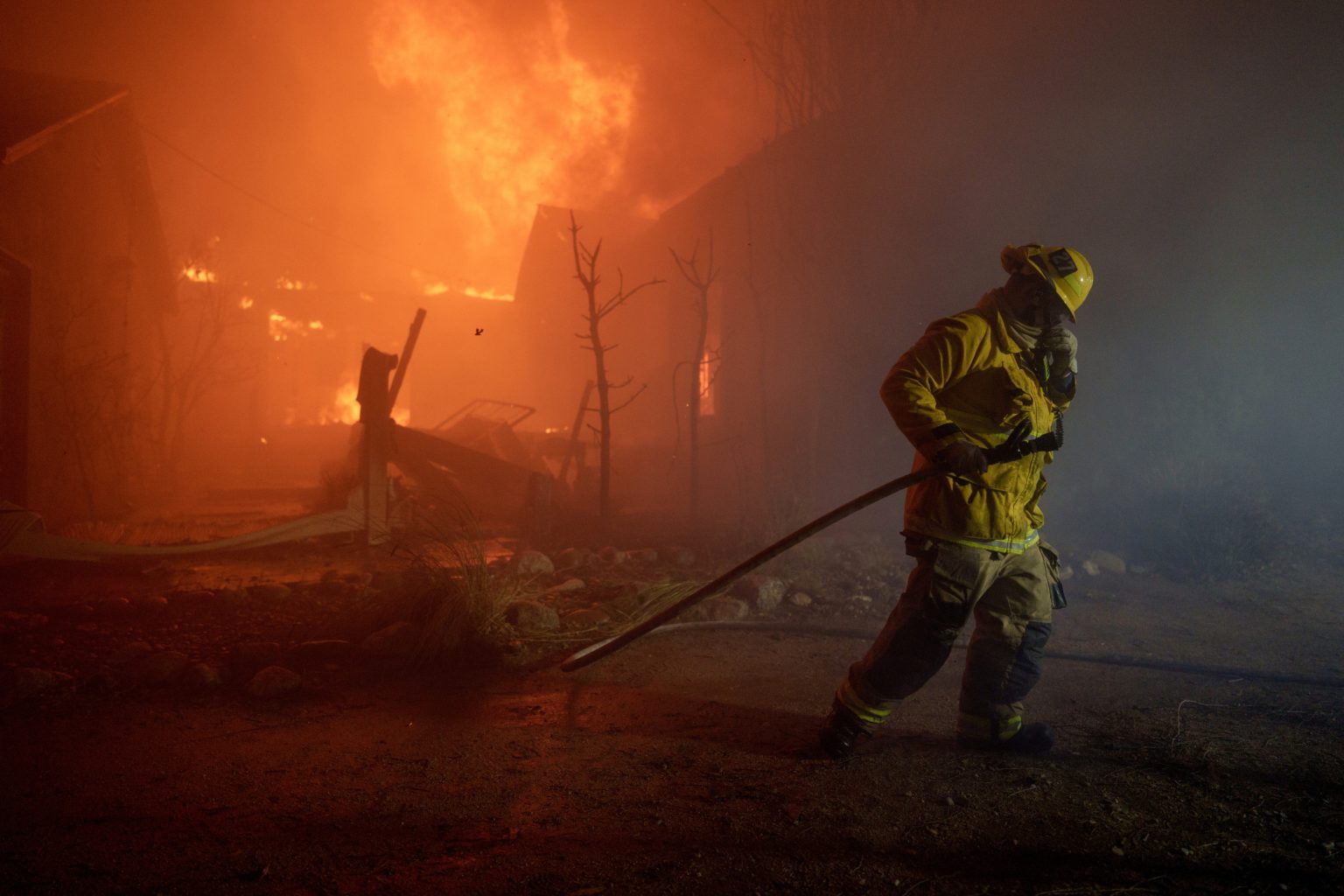The emergence of the Eaton Fire near Pasadena, California, on Tuesday night, alongside the ongoing Palisades fire, has cast a pall of urgency and concern over Los Angeles County. Driven by fierce Santa Ana winds, these wildfires have prompted widespread evacuations as they rapidly consume thousands of acres of land, threatening homes, infrastructure, and lives. The Eaton Fire, igniting near Altadena and Midwick drives, exploded to encompass 400 acres within a short span, its growth fueled by the relentless winds. Simultaneously, the Palisades fire continued its destructive march, scorching over 2,900 acres. Both fires remain under investigation, leaving their origins shrouded in mystery.
The intensity and speed of these fires underscore the potent combination of factors at play. Low humidity, parched vegetation, and the shifting, powerful Santa Ana winds have created a perfect storm for rapid fire growth and the spread of embers, igniting spot fires far ahead of the main blaze. Firefighters are battling these infernos under extreme conditions, striving to contain the flames and protect communities in the path of destruction. The sheer scale of the fires and the unpredictable nature of the wind present a formidable challenge, demanding unwavering vigilance and rapid response from firefighting teams and emergency personnel.
The Eaton Fire, in particular, exhibited alarmingly fast expansion, fueled by wind gusts reaching up to 85 mph. These intense winds render traditional firefighting methods less effective, making it incredibly difficult to establish containment lines. The topography of the affected areas further complicates the situation, as the hilly terrain can channel and accelerate the spread of the flames. The rapid spread of both the Eaton and Palisades fires necessitates swift and decisive action to evacuate residents in affected areas and ensure their safety.
California Governor Gavin Newsom declared a state of emergency for the areas affected by the Palisades fire, recognizing the severity and potential scale of the disaster. This declaration unlocks crucial resources and facilitates a coordinated response involving state and local agencies. Newsom emphasized the extreme fire risk posed by the powerful windstorm and urged residents to heed weather reports and instructions from emergency officials. This proactive approach aims to minimize casualties and damage while maximizing the efficiency of the firefighting efforts.
The dramatic footage of evacuations, particularly from Altadena, where residents could be seen leading horses to safety, paints a vivid picture of the urgency and fear gripping the affected communities. The social media sphere has become a vital channel for disseminating information and expressing concern. Meteorologists, weather analysts, and ordinary citizens are sharing real-time updates, warnings, and expressions of disbelief at the speed and ferocity of the fires. The widespread sharing of these images and messages underscores the collective anxiety and the sense of shared vulnerability in the face of this unfolding natural disaster.
The immediate future remains uncertain as firefighters continue their relentless battle against the flames. The priority remains the safe evacuation of residents from threatened areas. The combined efforts of ground crews, aerial support, and the coordinated response of various agencies are crucial in mitigating the damage and protecting lives and property. As the night unfolds, the focus will likely remain on containing the spread of the fires and ensuring the safety of those in harm’s way. The long-term recovery process, however, will require substantial resources and a concerted effort to rebuild communities and restore the affected landscape. The causes of both fires remain under investigation, and understanding the origins of these blazes will be essential in preventing future disasters.

